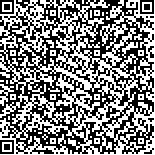| 摘要: |
| [摘要] 目的 分析晚期早产儿及足月儿急性胆红素脑病(ABE)的临床特点。方法 回顾性分析2015-01~2017-12河南省4家医院胎龄≥35周的新生儿胆红素脑病患儿92例的临床资料。结果 92例患儿中入院日龄的中位数为5.0 d,黄疸出现日龄的中位数为2.1 d,诊断为胆红素脑病时间的中位数为4.0 d。原发疾病中溶血性疾病53例(57.6%),败血症或感染36例(39.1%),出生相关的创伤性疾病2例(2.2%),1例未找到原发疾病,考虑与喂养不当相关。总胆红素(TBiL)峰值平均为(522.63±120.64)μmol/L,血总胆红素/血白蛋白(B/A)平均为(9.21±2.24)mg/g,白蛋白平均为(33.73±4.29)g/L。完成脑干听觉诱发电位(BAEP)检查71例,正常22例,轻-中度异常8例,重度异常以上41例,异常率为69.0%。完成头颅MRI检查69例,发现ABE典型改变32例(46.4%)。接受机械通气21例,光疗92例,换血84例,静脉应用丙种免疫球蛋白57例,静脉输注白蛋白76例,酶诱导剂36例。死亡21例。存活71例中遗留听力及脑瘫等严重神经功能障碍39例(54.9%)。死亡组TBiL峰值平均为(568.04±103.63)μmol/L,与存活组(511.28±123.36)μmol/L比较差异无统计学意义(P>0.05)。结论 新生儿ABE易遗留听力损伤。光疗无论是否和换血同时进行,持续时间和强度都是必要的。 |
| 关键词: 急性胆红素脑病 晚期早产儿 足月儿 新生儿 |
| DOI:10.3969/j.issn.1674-3806.2020.11.16 |
| 分类号:R 722 |
| 基金项目: |
|
| Clinical characteristics of 92 cases of acute bilirubin encephalopathy in late preterm infants and full-term infants |
|
LI Rui, FU Hui, LI De-liang, et al.
|
|
Neonatal Disease Diagnosis and Treatment Center, Children′s Hospital Affiliated to Zhengzhou University, Henan Children′s Hospital, Zhengzhou Children′s Hospital, Henan 450000, China
|
| Abstract: |
| [Abstract] Objective To analyze the clinical characteristics of acute bilirubin encephalopathy(ABE) in neonates. Methods The clinical data of 92 cases of neonatal bilirubin encephalopathy with gestational age≥35 weeks from January 2015 to December 2017 in four hospitals in Henan Province were collected and analyzed retrospectively. Results In the 92 cases, the median age of admission was 5.0 days; the median age of occurrence of jaundice was 2.1 days, and the median time of diagnosis of bilirubin encephalopathy was 4.0 days. In primary diseases, there were 53 cases of hemolytic disease(57.6%), 36 cases of sepsis or infection(39.1%), 2 cases of birth-related traumatic disease(2.2%), 1 case with no primary disease found and considered to be related to improper feeding. The mean peak level of total bilirubin(TBiL) was (522.63 ± 120.64)μmol/L; albumin was (33.73±4.29)g/L, and TBiL/serum allbumin(B/A) was (9.21±2.24)mg/g. Brainstem auditory evoked potential(BAEP) examination was completed in 71 cases among whom 22 cases were normal, and 8 cases were mildly to moderately abnormal, and 41 cases were severely abnormal, and the abnormal rate was 69.0%. Cerebral magnetic resonance imaging(MRI) examination was completed in 69 cases among whom 32 cases were found having the typical changes of ABE(46.4%). Mechanical ventilation was performed in 21 cases, phototherapy in 92 cases, exchange transfusion in 84 cases, intravenous injection of immunoglobulin in 57 cases, intravenous injection of albumin in 76 cases and enzyme inducer in 36 cases. There were 21 deaths. Among the 71 patients who survived, 39 cases(54.9%) had severe neurological dysfunction such as residual hearing and cerebral palsy. The average TBiL peak value in the death group was (568.04±103.63)μmol/L, but there was no significant difference between the death group and the survival group (511.28±123.36)μmol/L(P>0.05). Conclusion Neonatal ABE is easy to cause residual hearing impairment. The duration and intensity of phototherapy, whether or not it is performed simultaneously with exchange transfusion, is necessary. |
| Key words: Acute bilirubin encephalopathy(ABE) Late preterm infants Full-term infants Neonates |

